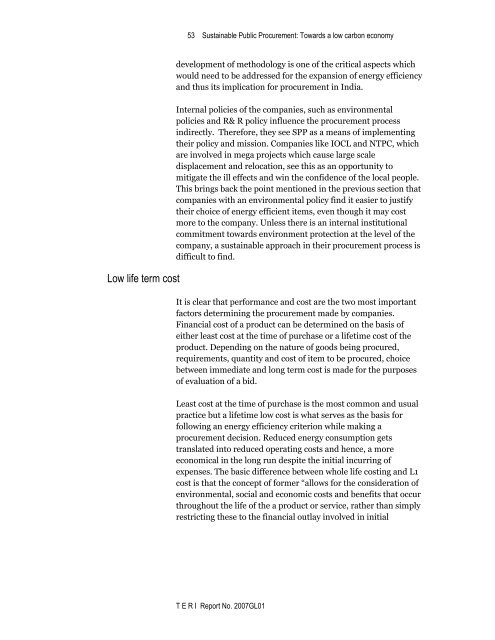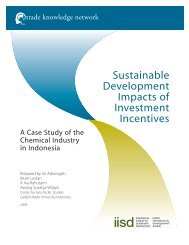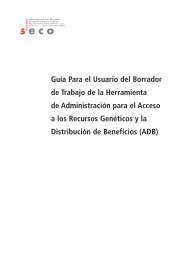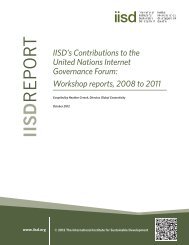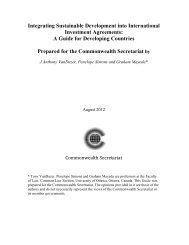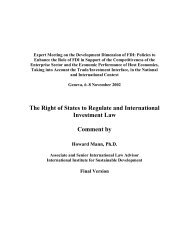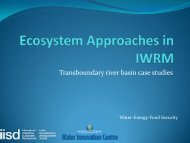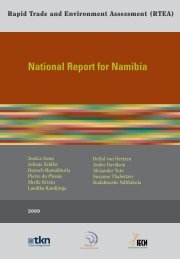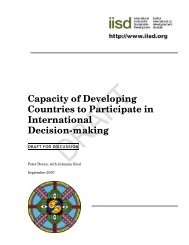Sustainable Public Procurement: Towards a lowâcarbon economy
Sustainable Public Procurement: Towards a lowâcarbon economy
Sustainable Public Procurement: Towards a lowâcarbon economy
You also want an ePaper? Increase the reach of your titles
YUMPU automatically turns print PDFs into web optimized ePapers that Google loves.
53 <strong>Sustainable</strong> <strong>Public</strong> <strong>Procurement</strong>: <strong>Towards</strong> a low carbon <strong>economy</strong><br />
Low life term cost<br />
development of methodology is one of the critical aspects which<br />
would need to be addressed for the expansion of energy efficiency<br />
and thus its implication for procurement in India.<br />
Internal policies of the companies, such as environmental<br />
policies and R& R policy influence the procurement process<br />
indirectly. Therefore, they see SPP as a means of implementing<br />
their policy and mission. Companies like IOCL and NTPC, which<br />
are involved in mega projects which cause large scale<br />
displacement and relocation, see this as an opportunity to<br />
mitigate the ill effects and win the confidence of the local people.<br />
This brings back the point mentioned in the previous section that<br />
companies with an environmental policy find it easier to justify<br />
their choice of energy efficient items, even though it may cost<br />
more to the company. Unless there is an internal institutional<br />
commitment towards environment protection at the level of the<br />
company, a sustainable approach in their procurement process is<br />
difficult to find.<br />
It is clear that performance and cost are the two most important<br />
factors determining the procurement made by companies.<br />
Financial cost of a product can be determined on the basis of<br />
either least cost at the time of purchase or a lifetime cost of the<br />
product. Depending on the nature of goods being procured,<br />
requirements, quantity and cost of item to be procured, choice<br />
between immediate and long term cost is made for the purposes<br />
of evaluation of a bid.<br />
Least cost at the time of purchase is the most common and usual<br />
practice but a lifetime low cost is what serves as the basis for<br />
following an energy efficiency criterion while making a<br />
procurement decision. Reduced energy consumption gets<br />
translated into reduced operating costs and hence, a more<br />
economical in the long run despite the initial incurring of<br />
expenses. The basic difference between whole life costing and L1<br />
cost is that the concept of former “allows for the consideration of<br />
environmental, social and economic costs and benefits that occur<br />
throughout the life of the a product or service, rather than simply<br />
restricting these to the financial outlay involved in initial<br />
T E R I Report No. 2007GL01


